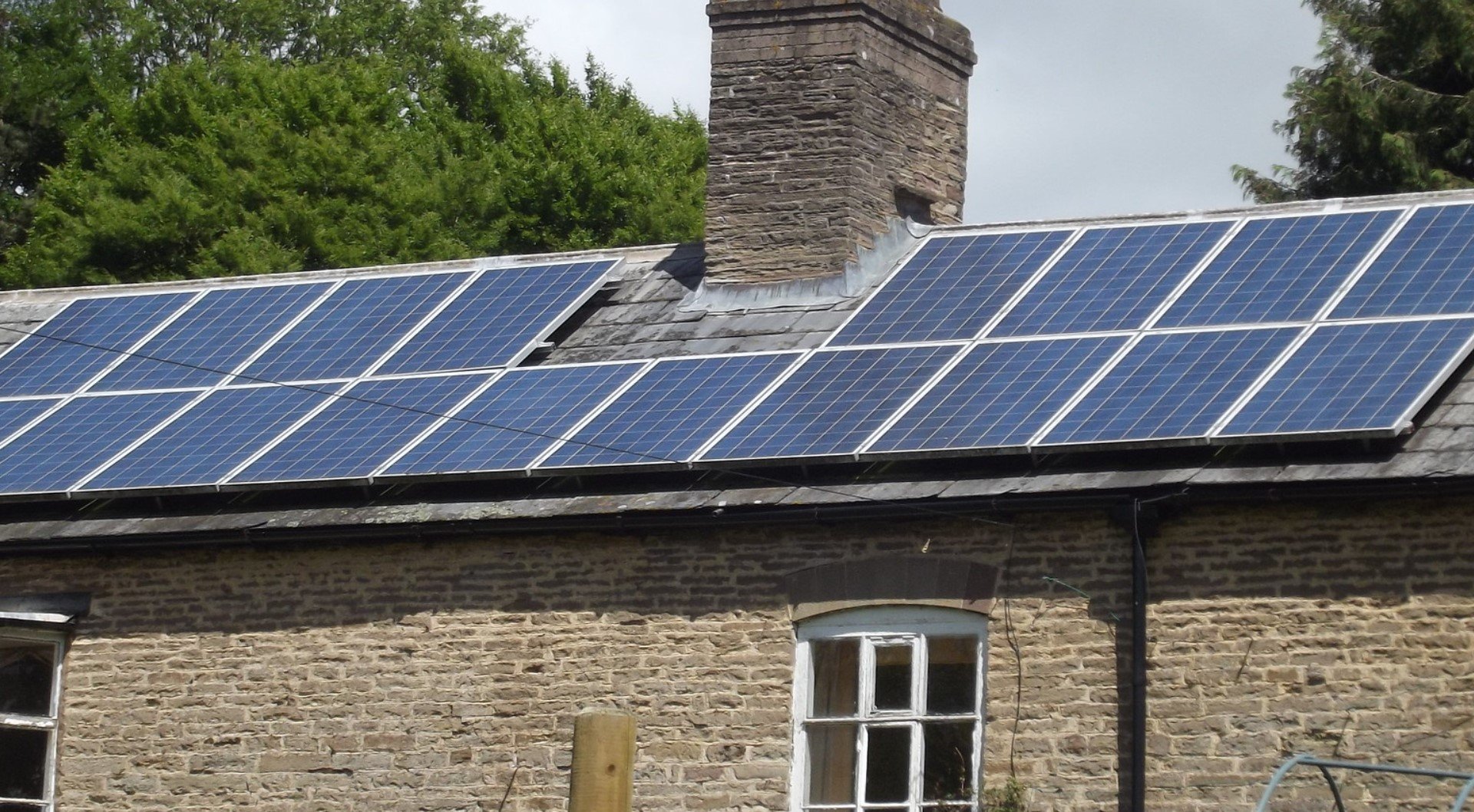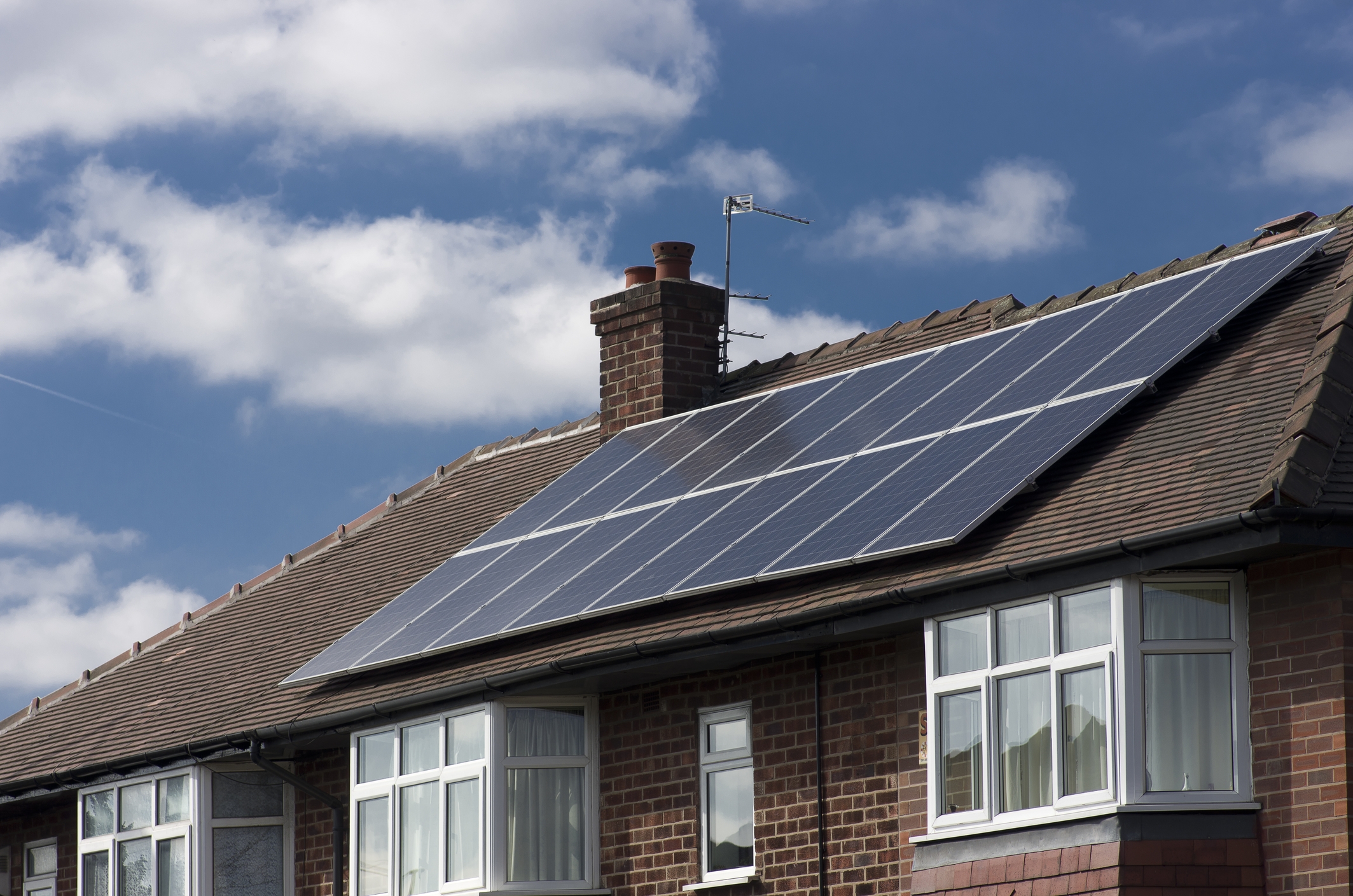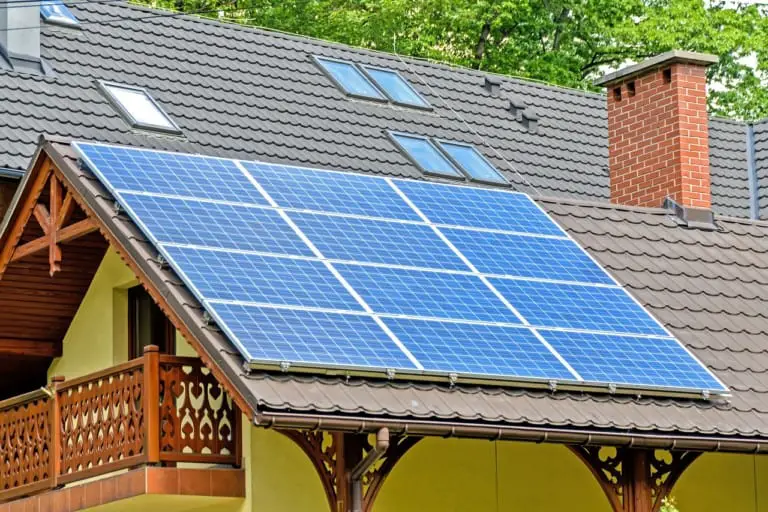How Much Do Solar Panels For 1000 Sq Ft Home Cost
A 2.5kw system costs around $10,500-$11,000, and after the federal tax credit should be down to about $6,000. This does not account for any other equipment you install, roof considerations or other incentives available for you. Also note that the Federal incentive drops from 26% to 22% in 2021 and will be gone by 2022.
With or without the tax incentive, we can only provide an estimate of how much solar panels cost for a 1000 sq ft house. Cost is based on how much electricity is consumed. Two 1000 sq ft houses may not have have the same energy usage, so their solar power requirements will be different.
Here is an example. A couple lives in a 1000 sq ft house in Seattle They have a heater, large TV, spends hours watching TV and washes clothes every day.
A man lives alone in a 1000 sq ft house in Texas. He goes to work every day and spends most of the day outdoors. He only turns on the AC at night when he goes home.
These are both 1000 sq ft houses but their energy usage differs greatly. It is not just because of the location but the number of occupants and their lifestyle. This is why it is not possible to give a one size fits all answer. Each house, even if the same size, will have unique electricity usage, which determines how much solar power has to be installed.
How Do Solar Panels Work
Do solar panels require regular maintenance?
No, but cleaning them can improve power generation if they are dirty.
Will residential solar power system cost fall in Texas in 2021?
Given this environment, and the effect of import tariffs placed on solar panels by the Trump administration during 2018, it is hard to see that solar power system prices in Texas will fall during 2021.
How Much Do Solar Panels Save
Switching to a solar energy system could potentially cut your energy bill by 75%. The savings you and your family see will depend greatly on where you live, what the climate is like and your particular energy needs. For instance, an average homeowner in Portland, Oregon, will see total savings of $38,000, whereas a homeowner in Los Angeles could save as much as $90,000 over 20 years.
Many solar energy companies provide a free calculator tool to help you easily estimate the cost and savings of installing solar panels on your home. Different solar calculators may estimate electricity costs in different ways. Numbers can be based on the national average, regional averages or other information you provide.
The average American electric bill is between $100 and $200 per month, and the average yearly energy cost is about $1,500. Depending on how much you pay out-of-pocket for the solar panel system, it could take five to 15 years to break even. To calculate how long it will take you to break even on savings versus the cost of your solar panels, first subtract your incentives and rebates from your costs. Divide that number by the amount you are saving on utility bills per year.
Even if your solar panels generate 100% of your electricity needs, you may still receive a utility bill. However, instead of asking for payments, you will get net metering credits for the month.
Don’t Miss: How To Become A Sole Proprietor In Texas
Is It Worth Getting Solar Batteries
An off-grid solar system cant use the grid so must either rely on the solar panel output when the sun shines, or a bank of home energy storage batteries at night or on cloudy days.
A grid-tie system solar system can also battery back-up such as the Tesla Powerwall. Such an installation gives very good protection against power outages.
You dont need to have a solar electric PV system installed in Texas or anywhere else to enjoy the security afford by a Powerwall they can be connected into an ordinary home electrical system.
How Does Solar Tracking Work

The suns seasonal arc is like a pendulum. Every day it swings higher and lower, varying in height by tens of degrees across the seasons because its angle changes throughout Earths annual orbit around the Sun. These movements can be separated into two axes: horizontal and vertical.
An automatic sun-tracker keeps the solar panel array perpendicular to the suns rays. This way, an optimal angle of incidence is maintained at all times.
A solar power system that tracks the sun vertically is called a single axis tracker and one which tracks both axes is called a dual-axis tracker.
In general, the more expensive dual-axis tracking will recover more energy than its cheaper counterpart over time but an experienced installer can help you find out whats best for your needs.
Recommended Reading: What Is The Best Retirement Plan For A Sole Proprietor
Lower Your Electric Bills
Electricity generated through solar panels is completely free. You will be using electricity generated by your system most of the time, therefore, the energy consumption registered by the utility meter will be less. Less number of utility kilowatt-hours means a lower electric bill!
It should also be noted that owing to the geolocation of the state of Texas, the PV system will receive more sunlight hours. More sunlight is tantamount to the additional generation of electricity which means more savings!
Net Metering Throughout Texas
Net metering is absolutely vital to getting the most out of your homes solar energy. NM is essentially a connection of your photovoltaic system back to the electrical grid, and it allows all the excess electricity that your panels create to be fed back into the overall power supply. The power company who owns the grid keeps track of how much electricity that your home has provided and then discounts your power bill based on the going rate. If net metering isnt available, any excess power created simply goes to waste because it is famously difficult to store large amounts of power in a battery . So interconnection to the grid and a power provider that actually buys your excess energy is crucial to paying off your system quickly and reducing your power bill each month.
Many of Texas largest REPs provide quality net metering programs. Its worth nothing that Texas power industry is deregulated and there is no requirement for these companies to offer net metering at all . But the tides are shifting and more REPs are offering it as more homeowners express a desire to go solar. Definitely research your local provider to determine whether they have an Energy Buyback Program.
Recommended Reading: How Much Power Does A 9kw Solar System Produce
Solar Charge Controller Cost
The solar charge controller charges your batteries. The batteries cannot handle the energy on their own at this time. The charge controller helps convert the energy into a storable form. Each battery needs its own controller, with costs of around $550 to $600 each. You may have 2 to 8 batteries in your home, depending on the type of battery you have and the system size you need.
History Of Solar Policy In Texas
Solar energy has an interesting history in the Lone Star state. While the state ranks 5th on SEIAs 2018 national rankings with nearly 3,000 megawatts of solar capacity deployed, solar advocates feel the states solar industry has much room to grow. In fact, only 0.85 percent of the states electricity comes from solar, demonstrating the massive potential for solar in Texas.
The states first solar policy came in 1981, when the state issued a Renewable Energy Systems Property Tax Exemption. The policy ensures homeowners they would be exempt from the increased property tax value from their energy installations such as solar panels. Texas quickly followed up with another piece of solar legislation with the adoption of Solar Rights in 1982. Although the policy didnt focus on financial incentives, it recognizes solar energy usage as a property right and ensures that proper sunlight is made available to those who operate solar-energy systems.
Increase your impact! Help us by spreading the word to your friends and family. To get started, copy and paste the template below into your email.
I used EnergySage’s Solar Data Explorer to understand the costs and benefits of solar in Texas. Check it out: https://www.energysage.com/solar-panels/tx/
Sincerely,
You May Like: How To Dispose Of Pine Sol
Choosing The Best Solar Panel To Install
There are several makes and models of solar panels available in the market, and you have to select the right one. But how do we judge which is the right one? Is there a single make and model that fits all cases? Certainly no.
The right one brings you the highest value in terms of savings. Three main factors determine that value:
- Cost to Efficiency
- The lifespan of the panels
- System size
High-efficiency solar panels produce more electricity but at greater per solar panel cost. However, this might outsize the overall savings as compared to a couple of extra but less-efficient solar panels.
The lifespan of panels is yet another factor to consider. A high-cost panel with a greater lifespan may bring more value as compared to a low-cost panel but with a small lifespan.
You will also need to consider the system size while selecting the solar panels. If you require a system with high production capacity, you may need highly efficient panels to save roof space.
Calculating The Cost Of Solar Panels For Your Specific Home In Tx
Installation costs for solar will vary with your location and the size of your homes electricity bill. To be meaningful solar cost information needs to be tailored to the individual situation. If you enter your details into the solar calculator below you will get a solar cost and savings estimate and find out how much solar panels will cost for your home based on current offers from your local solar installation companies.
Who are the best solar panel installation companies in Texas that offer the best deals on quality solar systems?
Read Also: Where Can I Buy Solar Batteries
The Price Of Solar Panels In Texas
How much do solar panels cost in Texas?
If you are an average user, you may need a 5kW system to power your house. It will cost you around $16,000 to $20,000 without the federal tax incentives.
According to the extension of the ITC passed by Congress, the solar systems installed from 2020-22 will get 26% off, on the original cost of the solar panels. Therefore, a 5kW system will eventually cost you around 12,000$ to 15,500$.
The solar systems installed in 2023 will get 22% off, on the systems cost. The tax credit will drop to 0% for the solar systems installed on residential properties after 2023. Therefore, if you plan to go solar then it is better to do it before 2024.
Property Tax Exemption For Renewable Energy Systems

According to the Texas property tax code, you may exempt 100% of the appraised property value that arises from the installation of a solar energy system in your home. That means that although your home value increased from the addition of a solar panel system, you will not see an increase in your property tax bill.
For example, lets say your property is valued and taxed at $100,000. Then you install a solar panel system that adds $15,000 to the property value. The exemption applies to the added value that arose from the solar panel system. So with the exemption, you will only be taxed on the property value of $100,000. That means in Texas, solar panels will give your home extra value for no extra cost.
Recommended Reading: Can A Sole Proprietor Build Business Credit
Hybrid Solar System Price
Many people going off-grid choose more than one energy source. This is a good idea because you have a backup system in case of failure. Hybrid systems may include wind and solar or solar with a backup generator. The total system cost depends on the hybrid type, home size, and your power needs. Expect costs to range from $20,000 to $80,000 on average for a hybrid solar system.
Solar Battery Storage System Prices
Uninstalled, battery systems can cost anywhere from $800 to $10,000. Generally speaking, solar systems that can power an entire home cost between $5,000 to $7,000.
The price of your system will largely depend on the kilowatt-hours to power your home or appliance. Expect to pay somewhere between $400/kWh to $750/kWh. For example, you might pay between $5,600 and $10,500 for a battery with 14 kWh of storage and around $2,000 to $3,800 for a five-kWh battery.
Read Also: What’s The Cost Of Solar Panels
How Many Solar Panels Does It Take To Run A House Off Grid
Solar panels, solar battery charger, batteries and an inverter used in off-grid solar systems
As a general rule, you need the same amount of solar panels as for a grid-tied system, but with extra panels depending on how much autonomy you require.
Lets say you have a home that uses 30kWh per day and the irradiance in your location is the US average of 5.3 peak sun hours per day. A 5.7kW solar system would meet your needs in theory, ignoring PV system losses.
Most of your homes energy usage, maybe 75%, is used in daytime. You need to make sure that your battery bank is fully charge duing the day so that you have uninterrupted electrical supply through the night.
Also, what if you have several days of cloudy days with low solar output? In this case the energy storage battery bank would have to meet the shortfall in energy production.
I would add another 25% to the estimated solar system size required, in this case making the system size 7.5kW and a battery bank sized to supply the home for 48 hours with no solar generation.
The average US house running with off-grid solar would need 25 solar panelseach rated at 300 watts.
Kw Solar System Price
The average home located in a very sunny climate can easily use a 5kW system to go off-grid. A smaller-than-average home with a backup system could also go off-grid with a 5kW solar system in a moderately sunny area. At this size, the system can generate sufficient power for most homes. If you have excessive energy needs, it may still be too small. A 5kW system costs around $40,000 to $45,000 for off-grid use.
Also Check: How To Start A Sole Proprietorship In South Carolina
Cost Comparison Of Solar Panel Setup To Electricity Rates
An average 200 square feet system is equivalent to 3.5 kW in production capacity. A 3.5kW system costs around $8,500.
In the state of Texas, there are 3500+ sun hours per year. Therefore, a 3.5kW can generate over 5000 kWh of electrical energy annually. The electricity rate in Texas is around $0.12 per kWh. To sum up, an average $8,500 solar power system saves $600+ per year on electric bills in Texas. During 15 years, the cost of solar panels is recovered.
What Does It Mean To Go Off The Grid
Many people use solar panels to offset the cost of electricity, but this does not mean that they have gone off-grid. Using solar energy to offset energy costs means you are still connected to the local power supply and can use it if you need more energy than your panels produce.
To go completely off-grid, your entire home must run on electricity or energy that you produce yourself using solar panels and batteries. Your home cannot use any electricity from the town power supply. Installing solar panels is not enough to be considered off-grid, and most people who use solar energy still rely on electricity from an outside source. To go completely off-grid, you also need a storage system to smooth out energy production and usage over time. Finally, you need a way to transfer energy into the batteries and convert it to electricity.
Don’t Miss: Can Solar Panels Cause Cancer
The Future Will Thank You
Not only do solar panels offer an incredible 5-figure return on investment, but they help enable you to better prepare for a future that is sure to be complicated by difficult energy decisions that we all have to make. Energy costs are on a steep rise so its almost certain that your annual savings will far exceed $800.55 in a short amount of time. We arent sure what the state of energy in this country will be in 10 years, but with a solar panel installation you can be assured that youre better prepared for it than most.
How Much Energy Do You Consume Per Month

Energy consumption, and production for that matter, is measured inkWh, which stands for kilo-Watt-hours. This piece of information is generally available on your electricity bills.
For example, the following image is from an electricity bill that contains historical energy consumption in kWh:
Above is an example of both a table and a pole graph showing power consumption in kWh. The table shows monthly energy consumption values, while the graph displays the average daily consumption for each month.
In your case, the electricity bill will probably be different, but generally, it will contain enough data for you to figure out your average monthly energy consumption.
If you have enough data, calculate the sum of your energy usage from each of the past 12 months, and divide that by 12. This will result in your annual average monthly energy consumption in kWh.
Once you have an idea about your energy needs, the next step is to figure out how much sunlight is available to you.
Recommended Reading: Are Solar Panels A Good Idea
